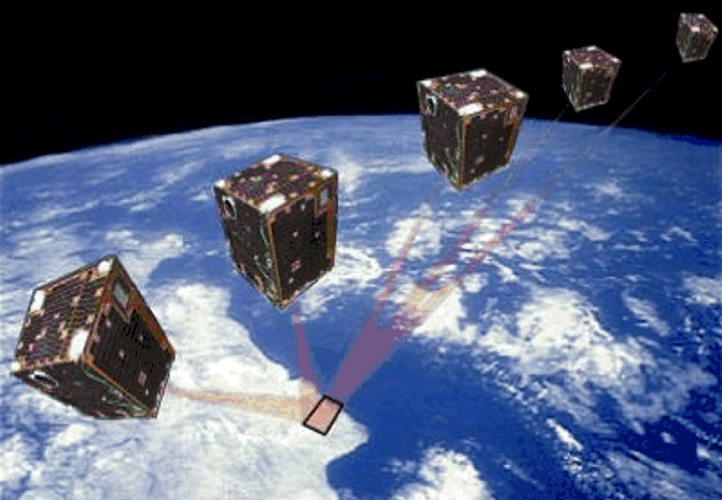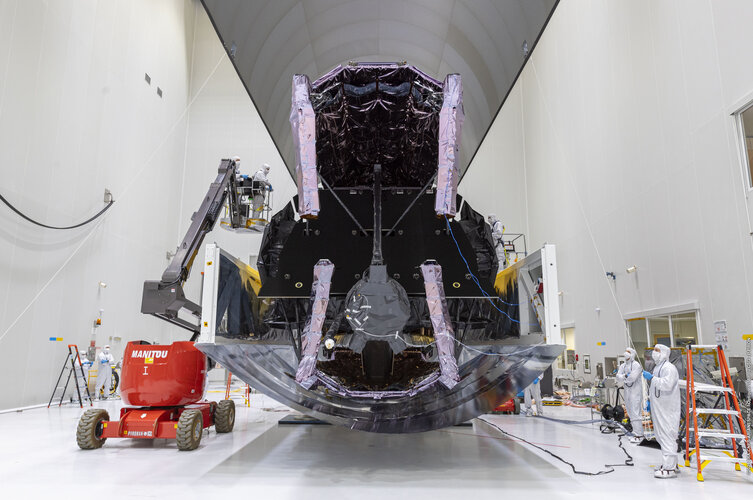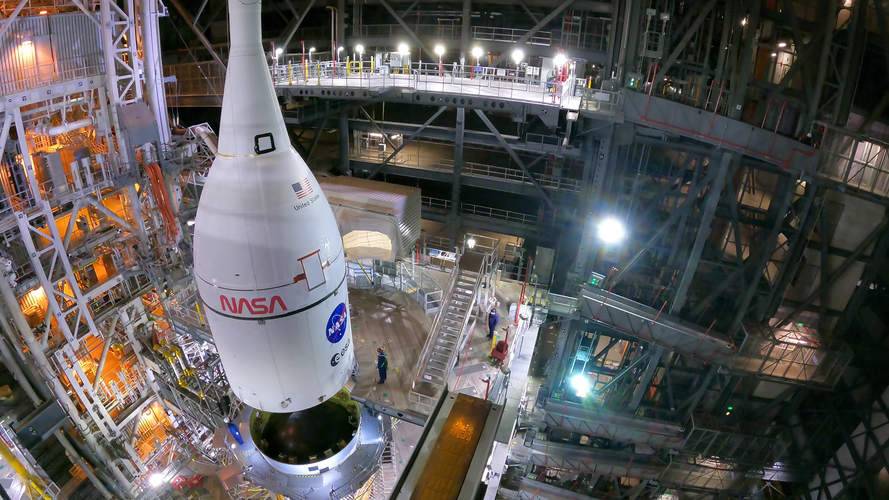
Copernical Team
Printable steak, insect protein, fungus among NASA space food idea winners
 NASA has chosen 18 companies to continue developing space food that astronauts could eat on long-term, Deep Space missions to Mars or other planets, such as 3D-printed steak and ingredients including insect protein, fungus and algae.
The space agency believes its ongoing Deep Space Food Challenge is vital to keeping astronauts healthy and in good spirits during long isolation. NASA anno
NASA has chosen 18 companies to continue developing space food that astronauts could eat on long-term, Deep Space missions to Mars or other planets, such as 3D-printed steak and ingredients including insect protein, fungus and algae.
The space agency believes its ongoing Deep Space Food Challenge is vital to keeping astronauts healthy and in good spirits during long isolation. NASA anno US targeting Feb. 2022 to launch new lunar program Artemis
 NASA said Friday it is now targeting February 2022 for the uncrewed lunar mission Artemis 1, the first step in America's plan to return humans to the Moon later this decade.
The space agency had initially wanted to launch the test flight by the end of this year, with astronauts on the ground by 2024 on Artemis 3, but the timeline has slipped back.
It achieved a major milestone Wednesday
NASA said Friday it is now targeting February 2022 for the uncrewed lunar mission Artemis 1, the first step in America's plan to return humans to the Moon later this decade.
The space agency had initially wanted to launch the test flight by the end of this year, with astronauts on the ground by 2024 on Artemis 3, but the timeline has slipped back.
It achieved a major milestone Wednesday SpaceX conducts 2 test firings of Starship 20 in Texas
 SpaceX conducted two engine test firings of its Starship 20 prototype rocket at its facility near Brownsville, Texas, on Thursday
The launch vehicle, a part of SpaceX's plans to travel to the moon and eventually Mars, fired its engines for only seconds. The rocket was held down for a so-called static fire later. The Federal Aviation Administration is currently reviewing a license reques
SpaceX conducted two engine test firings of its Starship 20 prototype rocket at its facility near Brownsville, Texas, on Thursday
The launch vehicle, a part of SpaceX's plans to travel to the moon and eventually Mars, fired its engines for only seconds. The rocket was held down for a so-called static fire later. The Federal Aviation Administration is currently reviewing a license reques Major step in UK contribution to space mission to study solar wind

Space scientists from the University of Leicester have delivered a key component for a new mission to study the impact of the solar wind on Earth's magnetic field.
Engineers from the University's Space Research Centre have completed the structural and thermal model for the UK's latest X-ray telescope, the Soft X-ray Imager (SXI), destined for space aboard the SMILE (Solar wind Magnetosphere Ionosphere Link Explorer) probe when it launches at the end of 2024.
The model, which has now been delivered to Airbus in Spain for integration and testing within the prototype satellite system, is not the so-called flight model—but will help engineers understand the extreme requirements for the final design.
Seattle students virtually Zoom into space for a chat with astronaut Megan McArthur

The students gathered at the Museum of Flight in Seattle were ready to ask Megan McArthur questions, via video link, about life as an astronaut. She was about as far away as Walla Walla—but in outer space.
McArthur is a NASA astronaut aboard the International Space Station, moving above the Earth at more than 17,500 mph, orbiting every 90 minutes.
Just before the video connection was made for the Saturday event, former astronaut Dottie Metcalf-Lindenburger, an astronaut from 2004 to 2014, spoke about life aboard the space station and was asked, of course, everyone's favorite question: How do you go to the bathroom in space?
The answer: There are spacesuit hookups and funnels and toilets. Nothing floats free.
She was asked about the space station's size, and replied that it was a surprise to her how large it was. It's about the size of a soccer field, and the crew quarters—seven astronauts are currently at the station—are about the size of the interior of a Boeing 747 jumbo jet.
Then from space came a question: "Dottie, can you read me?"
Male mice exposed to simulated deep space radiation experienced impaired spatial learning

Permafrost thaw could release bacteria and viruses

When considering the implications of thawing permafrost, our initial worries are likely to turn to the major issue of methane being released into the atmosphere and exacerbating global warming or issues for local communities as the ground and infrastructure become unstable. While this is bad enough, new research reveals that the potential effects of permafrost thaw could also pose serious health threats.
As part of the ESA–NASA Arctic Methane and Permafrost Challenge, new research has revealed that rapidly thawing permafrost in the Arctic has the potential to release antibiotic-resistant bacteria, undiscovered viruses and even radioactive waste from Cold War nuclear
Proba-1 Celebrates 20th Birthday In Orbit

On this day, twenty years ago, ESA’s first small satellite, Proba-1 (Project for On Board Autonomy), was launched with just one goal – to prove technologies in space.
Week in images: 18 - 22 October 2021

Week in images: 18 - 22 October 2021
Discover our week through the lens
Artemis I stacked
 Video:
00:04:28
Video:
00:04:28
Time lapse of the stacking of the Orion spacecraft on top of the fully assembled Space Launch System (SLS) rocket at NASA’s Kennedy Space Center in Florida, on 21 October 2021, in preparation for the uncrewed Artemis I launch.
For Artemis I, the European Service Module will take the spacecraft more than 64 000 km beyond the Moon in a test flight to demonstrate its capabilities.
The European Service Module is ESA’s contribution to NASA’s Orion spacecraft that will send astronauts to the Moon and beyond. It provides electricity, water, oxygen and nitrogen as well as keeping the spacecraft at the right temperature

